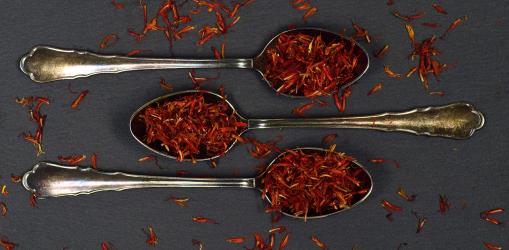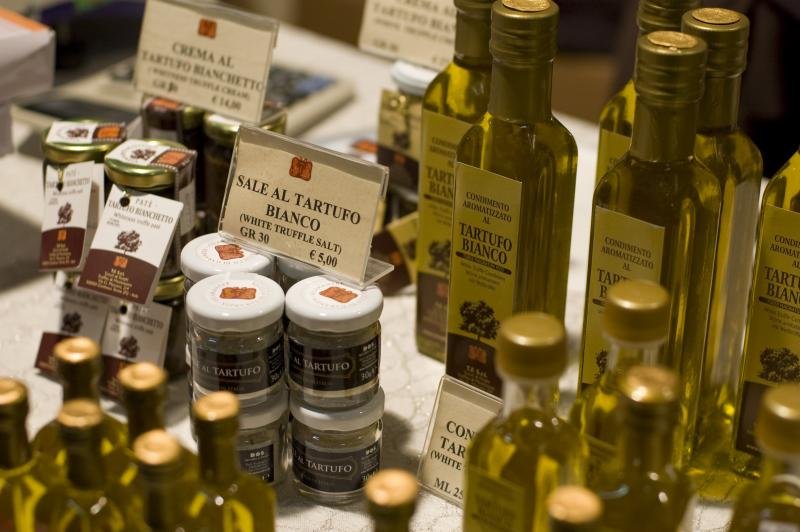

The original intent of this post was to compile a list of the best culinary specialties along the Via Francigena. However, as the list expanded, it became increasingly clear that the task would be too daunting. Therefore, we've decided to create more localized lists, starting from the heart of the waling tour towards Rome: Tuscany, the cradle of the Renaissance and home to frank and traditional cuisine, where even the humblest ingredients are transformed into extraordinary recipes. Here, chefs and local producers still rely on the wisdom of peasants passed down since the Middle Ages.
These are the best products to taste on your hiking tour on Via Francigena, in Tuscany.
The Truffle of San Miniato:
The most noble of fungi, it rests underground for months before being unearthed by the truffle dogs (yes, the noses of truffle dogs are indeed called that!) expertly led by their truffle-hunting partners; humble in appearance, precious on the scale, thrilling on the plate. The white variety is the pride of San Miniato, celebrated every year with a market fair and a festival between November and December. The best way to enjoy it? Shaved, perfect on tagliolini and risottos. But also with eggs, on beef carpaccio, or with scaloppine. A treat to indulge in to celebrate the beginning, the end, and also the journey itself.
Book this trip to taste it: The Heart of Via Francigena, San Miniato to Buonconvento

The Buccellato of Lucca:
One could write an entire article on the culinary delights of Lucca - from spelt to meat-filled tordelli, from rovelline to torta d'erbi, a surprising mix of wild herbs and sweet shortcrust pastry. But we choose the sweetest, the most caloric: the buccellato, king of Luccan desserts, a sweet doughnut enjoyed all year round, especially during the festivities of the Exaltation of the Holy Cross and the Palio della Balestra in September. Flour, raisins, anise seeds, butter or lard - these are the main ingredients, but as often happens, each family has its own secret recipe, passed down from generation to generation. An interesting fact: its name derives from the Latin 'Buccella', meaning morsel.
Book this trip to taste it: Via Francigena, from Pontremoli to Lucca

foto: wishversilia.com
Saffron from San Gimignano:
Did you think that "risotto giallo" was only eaten in Milan? In San Gimignano, the red gold is a PDO (Protected Designation of Origin) product and an exceptional protagonist: the first records of its cultivation date back to the 1200s, and even today, production and processing adhere to ancient medieval methods, from harvesting the flowers at the first light of dawn to drying near burning coals.
The resulting saffron has a very intense color and aroma, and is grown in glass jars to preserve its aroma and freshness. How to use it? In risottos and fresh pasta, naturally, but also with meat and fish: in the restaurants of San Gimignano, you can find it in lamb bites, with beef, or with mussels.
Book this trip to taste it: Via Francigena, from San Miniato to San Gimignano

Pici from Siena:
A flagship dish of Sienese cuisine, the humble and delicious pici appear at first glance to be very thick spaghetti: they are typically made with water and soft wheat flour (instead of durum wheat semolina), a dish from peasant cuisine that didn't require many or expensive ingredients. The recipe is rustic, and so is the sauce: they are best served with an 'aglione' sauce (tomato, carrots, celery, onion, and a variety of local garlic), with cacio e pepe, or with breadcrumbs.
Book this trip to taste it: Via Francigena, from Lucca to Siena

Pecorino from Val d’Orcia:
It's not just the lunar-like hills dotted with cypresses that make the Crete Senesi a destination; it also offers gastronomic delights, and our favorite is undoubtedly its Pecorino from Pienza (not exactly a Francigena locality, we are aware, but let's grant it a special status for its culinary merits!). The uniqueness of this cheese lies in the fact that the plant species and aromatic bushes that grow spontaneously in this area infuse the milk of the sheep grazing here with fragrant nuances. Added to this is the ancient cheesemaking art of using vegetable rennet, in this case, the flower of the thistle or wild artichoke. A tradition that has its roots in the Etruscan past and has been largely transmitted by Sardinian shepherds who, since the 1960s, have settled in many of the pastures abandoned by the Tuscans.
Book this trip to taste it: Via Francigena, from Siena to Viterbo

`